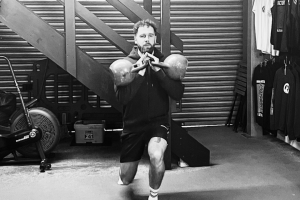Avoiding Over-Training and Injuries in BJJ: A Science-Led Approach For White Belts
As a seasoned BJJ strength and conditioning coach with many years of experience in personal training and whilst conducting various martial arts, I’ve seen many BJJ enthusiasts who end up facing a common challenge: injuries.
To get better, you want to train more, but training too much can lead to more injuries.
This post will take a look at what factors contribute to BJJ injuries and offer you science-led advice on how to train more safely and more efficiently.
Whether you are a white belt, or a more seasoned practitioner I hope this blog will benefit you on your journey to becoming a better BJJ athlete.

Strength Training: Tailored for BJJ
Strength training is a cornerstone of injury prevention in BJJ. But, not all strength programs are created equal. Many gym-based sessions focus on bodybuilding or powerlifting. These programs might not necessarily align with the specific demands of BJJ or your personal goals.
To reduce the risk of injuries, it is essential to follow a progressive strength plan designed explicitly for BJJ athletes. These programs target the unique muscle groups and functional movements required in the sport. This will help you ensure your body is prepared for competition!
Know The Risks: Focus on Injury-Prone Areas
Research has shown that the most common injuries in BJJ affect the knees, lower back, shoulders, elbows and fingers. With this knowledge you can prioritise exercises and mobility work that target these vulnerable areas to help reduce the likelihood of injuries.
According to a study in “Physical Therapy in Sport” 59.2% of BJJ practitioners reported at least one injury over six months! The good news is, this percentage can be significantly lowered with a progressive and sport-specific training plan.

Enhance Mobility: Move Freely, Train Safely
Poor movement and limited mobility are prime contributors to injuries in BJJ. To optimise your performance and reduce injury risk, you need to dedicate time to mobility training.
Do this by incorporating exercises that improve joint flexibility, muscle range of motion and movement patterns.
This will not only help you move more efficiently on the mats but also reduce your chances of injury.
Prioritise Rest: The Forgotten Key
Adequate sleep and recovery are vital for preventing overtraining and injuries. Yet, these are often the most overlooked aspects of training.
Aim for at least seven hours of quality sleep each night, especially if you are training intensely or frequently.
Rest is when your body repairs and grows stronger so don’t underestimate its importance.

Proper Nutrition To Fuel Your Success
Nutrition plays a significant role in preventing injury. Protein is crucial for building new cells and repairing muscles after training.
Research varies depending on the amount of training you are conducting and what your specific goals are. The Journal of Sports Science suggests that 1.2-1.7g of protein per kg of body weight is ideal. This can be as high as 1.8-2g per kg of body weight.
Tracking your protein intake using apps like MyFitnessPal can be helpful.
Protein is just one piece of the puzzle. A balanced diet that includes a mix of whole foods, including carbohydrates and healthy fats.
Remember: A few indulgences here and there won’t derail your progress and it will help you maintain a healthy relationship with food.
Injuries Are Not Inevitable
By following the strategies in this post, you can significantly reduce the risk of over-training and injuries while enhancing your performance on the mats. Remember, a Progressive strength training program, targeted mobility work, proper rest and nutrition are key elements of injury prevention and overall success in BJJ.
If you are serious about improving your BJJ performance while minimising risk of injury, check out the Strength and Conditioning for BJJ White Belts online course. It is designed to provide you with the tools and knowledge you need to excel in BJJ safely.
Any questions, get in touch! Email gavclarkescbjj@gmail.com




